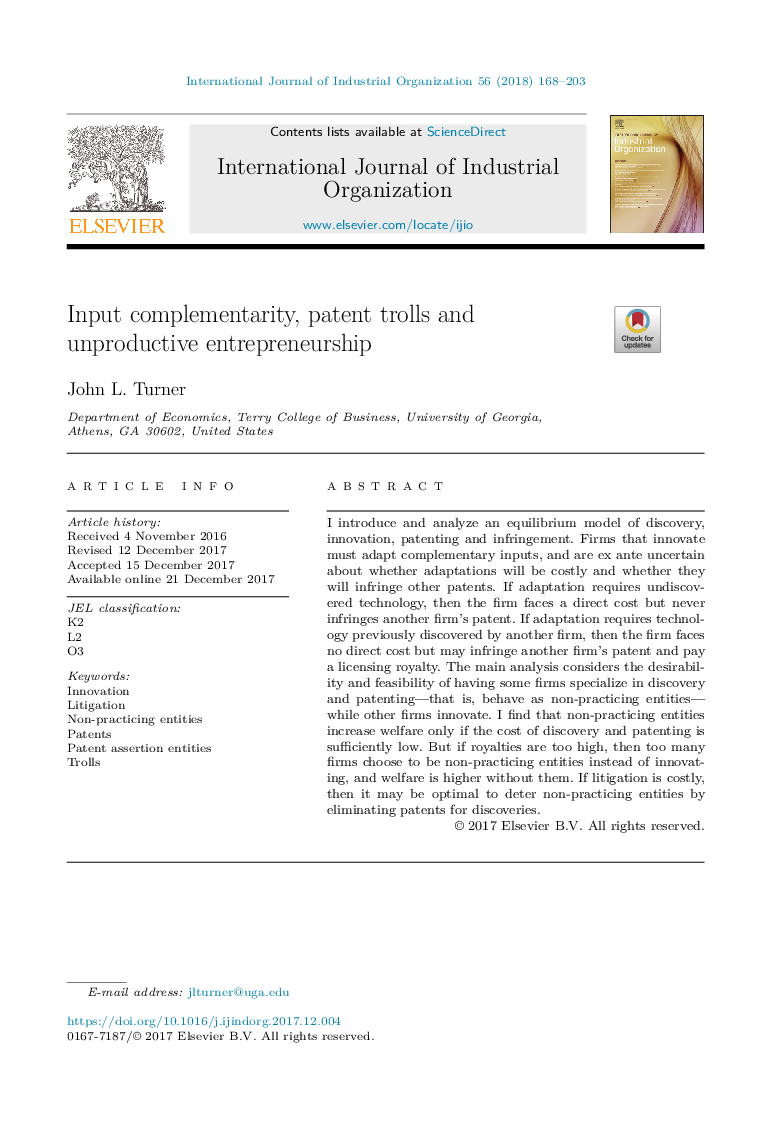| Article ID | Journal | Published Year | Pages | File Type |
|---|---|---|---|---|
| 7354994 | International Journal of Industrial Organization | 2018 | 36 Pages |
Abstract
I introduce and analyze an equilibrium model of discovery, innovation, patenting and infringement. Firms that innovate must adapt complementary inputs, and are ex ante uncertain about whether adaptations will be costly and whether they will infringe other patents. If adaptation requires undiscovered technology, then the firm faces a direct cost but never infringes another firm's patent. If adaptation requires technology previously discovered by another firm, then the firm faces no direct cost but may infringe another firm's patent and pay a licensing royalty. The main analysis considers the desirability and feasibility of having some firms specialize in discovery and patenting-that is, behave as non-practicing entities-while other firms innovate. I find that non-practicing entities increase welfare only if the cost of discovery and patenting is sufficiently low. But if royalties are too high, then too many firms choose to be non-practicing entities instead of innovating, and welfare is higher without them. If litigation is costly, then it may be optimal to deter non-practicing entities by eliminating patents for discoveries.
Related Topics
Social Sciences and Humanities
Economics, Econometrics and Finance
Economics and Econometrics
Authors
John L. Turner,
